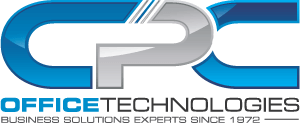
Managed Print Services (MPS) are an increasingly popular solution for businesses looking to streamline their printing and imaging processes, reduce costs, and improve security and sustainability. In this comprehensive guide, we'll provide businesses with everything they need to know about MPS, including what they are, how they work, and the benefits they can offer. We'll also provide insights into how to choose an MPS provider, implement MPS within your organization, and manage MPS on an ongoing basis.
Here's what we'll cover:
- Introduction to Managed Print Services
- Benefits of Managed Print Services for Businesses
- How Managed Print Services Work
- Choosing an MPS Provider
- Implementing Managed Print Services within Your Organization
- Managing MPS on an Ongoing Basis
- Best Practices for Maximizing the Benefits of MPS
- Conclusion
Introduction to Managed Print Services
Managed Print Services (MPS) is a solution that businesses use to manage their printing and imaging assets. MPS providers offer a range of services, including the provision of hardware, software, and supplies, as well as maintenance, monitoring, and management of the printing environment.
MPS can help businesses save time and money, improve security and sustainability, and enhance the overall efficiency of their printing and imaging processes. By outsourcing print management to an MPS provider, businesses can focus on their core competencies and free up resources for other critical business functions.
Benefits of Managed Print Services for Businesses
Implementing MPS can offer a range of benefits for businesses, including:
- Reduced Costs and Increased Efficiency: MPS can help businesses save money on printing and imaging costs by optimizing print fleets, reducing waste, and streamlining processes. MPS can also help businesses save time by automating many manual tasks, such as supplies ordering and maintenance.
- Improved Security and Compliance: MPS providers can help businesses improve their print security by providing solutions that protect against data breaches and ensure compliance with industry regulations.
- Increased Sustainability: MPS can help businesses reduce their environmental impact by promoting sustainability initiatives, such as reducing paper usage and promoting recycling.
- Better Management of Printing and Imaging Assets: MPS providers can help businesses gain greater visibility and control over their printing and imaging assets, enabling them to optimize their usage and reduce costs.
Learn more about the benefits of managed print services for your business.
How Managed Print Services Work
MPS providers typically offer a range of services, including:
- Assessment of Current Printing Environment: MPS providers will assess the current printing environment to identify areas for improvement and optimization.
- Design of Customized MPS Plan: Based on the assessment, MPS providers will develop a customized MPS plan that includes hardware, software, and service components.
- Implementation of MPS Plan: MPS providers will work with the business to implement the MPS plan, including the installation of hardware and software, and the integration of existing systems.
- Ongoing Management and Optimization: MPS providers will monitor and manage the printing environment on an ongoing basis, addressing issues and optimizing the environment to ensure continued success.
Choosing an MPS Provider
When choosing an MPS provider, businesses should consider the following factors:
- Provider Experience and Expertise: Look for a provider with a track record of success in the industry and a team of experienced professionals.
- Provider Capabilities and Services: Look for a provider that offers a range of services, including hardware, software, and supplies, as well as maintenance, monitoring, and management.
- Provider Pricing and Contract Terms: Look for a provider that offers transparent pricing and flexible contract terms.
Learn more about choosing the right mps provider
Implementing Managed Print Services within Your Organization
Implementing MPS within your organization involves a few key steps:
- Develop a Project Plan: Work with your MPS provider to develop a project plan that outlines the scope, timeline, and deliverables of the implementation process. The plan should include key milestones, such as hardware and software installation, user training, and ongoing support.
- Prepare Your Environment: Before implementing MPS, ensure that your environment is ready for the change. This may involve cleaning up the existing print fleet, updating software and drivers, and configuring network settings.
- Install Hardware and Software: Once your environment is ready, your MPS provider will install the necessary hardware and software components. This may include printers, scanners, and copiers, as well as print management software and security tools.
- Train Your Users: To ensure a smooth transition to the new printing environment, provide training and support to your users. This may involve providing instructions for using new equipment and software, as well as offering ongoing support and troubleshooting.
- Monitor and Optimize: Once MPS is implemented, your provider will monitor and optimize the printing environment on an ongoing basis. This includes monitoring usage, identifying and addressing issues, and optimizing the environment to ensure continued success.
Managing MPS on an Ongoing Basis
Managing MPS on an ongoing basis involves a few key activities:
- Monitor Usage and Costs: Regularly monitor printing and imaging usage and costs to identify areas for optimization and cost savings.
- Address Issues and Provide Support: Your MPS provider should provide ongoing support and troubleshooting to address any issues that arise. They should also proactively identify and address potential issues before they become major problems.
- Optimize the Printing Environment: As your business needs and printing environment evolve, work with your MPS provider to optimize the environment to meet changing needs.
- Review and Refine MPS Plan: Regularly review and refine your MPS plan to ensure that it is meeting your business needs and delivering the expected benefits.
Best Practices for Maximizing the Benefits of MPS
To maximize the benefits of MPS, businesses should consider the following best practices:
- Set Clear Goals and Metrics: Define clear goals and metrics for your MPS program, and regularly track progress towards those goals.
- Engage Your Users: Engage your users in the MPS program by soliciting feedback, providing training and support, and communicating the benefits of the program.
- Continuously Improve: Regularly review and refine your MPS program to ensure that it is delivering maximum value and meeting your business needs.
- Foster a Culture of Sustainability: Use MPS to promote sustainability initiatives, such as reducing paper usage and promoting recycling.
Conclusion
Managed Print Services can offer significant benefits for businesses looking to streamline their printing and imaging processes, reduce costs, and improve security and sustainability. By working with an experienced MPS provider and following best practices for implementation and management, businesses can realize the full potential of MPS and achieve long-term success.
Read our complete guide on managed print services for businesses.
Learn more about how CPC Office Technologies can help with your MPS needs
